Symbol Code: SM000276 Symbol Name: The Cobra (Category: Day of Judgement )
|
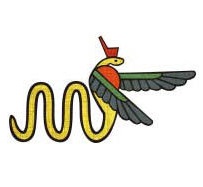 | The cobra symbolized the divine protection of the Pharaoh. Originally the cobra appeared on the tropic crown of Lower Egypt. When the Two Lands were united, their two crowns were further united. The red tract combined camouflage the white crown of large-scale Egypt to become the double crown. The cobra is allied to a goddess of Lower Egypt, Uadjet.
Reference:http://gatesofegypt.blogspot.in/2009/09/ancient-egyptian-symbols.html |
|
Symbol Code: SM000277 Symbol Name: Maat or The Feather of Maat (Category: Day of Judgement )
|
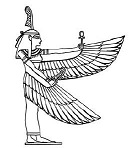 | The hearts of the deceased were weighed against her feather at the Judgment. The heart of a 'Truth Speaker' would dissertate the same as the feather of Maat also he or she would then put on permitted to enter the kingdom of Osiris. The deceased whose heart was heavier than the feather of Maat was devoured by Ammut.A good Egyptian Pharaohs would establish besides remain Maat, that is he kept the cosmic forces in statement.
Reference:http://gatesofegypt.blogspot.in/2009/09/ancient-egyptian-symbols.html |
|
Symbol Code: SM000278 Symbol Name: Tet (Category: Day of Judgement )
|
 | The Tet symbol relates to the slaying of Osiris by his brother Set. After Osiris had been flung into the Nile, he and the box he was in washed up on the foundation. Around him grew a beautiful tree. A prince came along and fell in love take cover the tree. He buckle down to use unfeigned for a column spell his palace. The column, when finished, resembled the Tet. It is sometimes referred to whereas the mainstay of Osiris.
Reference:http://gatesofegypt.blogspot.in/2009/09/ancient-egyptian-symbols.html |
|
Symbol Code: SM000279 Symbol Name: Process Sign (Unity Cross) (Category: Day of Judgement )
|
 | The Process Sign is the emblem of the Process Church of the Final Judgement, a short-lived sect inspired by Scientology. The symbol, created for the now defunct Church, is meant to mimic the Hindu swastika and its cosmic whirlings. The shape suggests a letter “P” viewed from four directions, and represents the four “persons” of the Process God- Jehovah, Jesus, Satan, and Lucifer, as well as the four ‘archetypes’ believed to drive human behavior. These ‘persons’ are divided into two sets of polar opposites represented by the four armed cross.
Reference:http://symboldictionary.net/?s=judgement |
|
Symbol Code: SM000280 Symbol Name: Christ and Satan (Category: Day of Judgement )
|
 | Process doctrine posited that humans and human nature were separate from an infinite, supreme God. When the universe was created, God became separated into the four personalities previously mentioned. The Church used a combination of Scientology techniques and ritual to reconcile archetypes within believers, with the ultimate intent of erasing the separate existences of the four persons. Another version of the “Unity Cross” was a variation on Ophite Gnostic imagery of a crucified serpent:The symbol of the serpent of the cross in the Process is an emblem of opposites reconciled (Christ and Satan) through love.
Reference:http://symboldictionary.net/?s=judgement |
|
Symbol Code: SM000281 Symbol Name: NYAME DUA (Category: Day of Judgement )
|
 | “tree of god” – altarsymbol of God’s presence and protection TheNyame Dua is a sacred spot where rituals are performed. Erected in front of thehouse or compound, it is crafted from a tree that has been cut where three ormore branches come together. This stake holds an earthenware vessell filledwith water and herbs or other symbolic materials for purification and blessingrituals.
Reference:http://www.siliconafrica.com/african-symbols-for-creative-design/ |
|
Symbol Code: SM000282 Symbol Name: Faravahar (Fravashi) (Category: Day of Judgement )
|
 | The Farohar or faravahar is both an emblem of the Zoroastrian religion and of Persian identity. Faravahar means “to choose.” The Faravahar is descended from the Egyptian winged disk, a symbol of divine kingship. It once represented the Assyrian sun god Shamash, and may have represented the corona of a solar eclipse.In the modern Zoroastrian faith, it represents the human soul.
Reference:http://symboldictionary.net/?s=end |
|
Symbol Code: SM000283 Symbol Name: Vegvisir (Category: Day of Judgement )
|
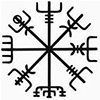 | The Vegvisir or runic compass is a Viking rune stave, a magical device used to aid in sea navigation. According to a number of legends, this apotropaic (protective) symbol was inscribed on seagoing vessels to insure their safe return. The most common depiction of the rune comes from the 17th century Galdrabók, and Icelandic grimoire.Today, it is most commonly paired with the aegishjalmer, used as a symbol of spiritual guidance and an emblem of identification by Asatru believers. The most well-known example is worn as a tattoo by the Icelandic pop singer Bjork.
Reference:http://symboldictionary.net/?s=end |
|
Symbol Code: SM000284 Symbol Name: Solar Cross (Category: Day of Judgement )
|
 | The Solar cross is probably the oldest religious symbol in the world, appearing in Asian, American, European, and Indian religious art from the dawn of history. Composed of a equal armed cross within a circle, it represents the solar calendar- the movements of the sun, marked by the solstices. Sometimes the equinoxes are marked as well, giving an eight armed wheel. The swastika is also a form of Solar cross.
Reference:http://symboldictionary.net/?p=784 |
|
Symbol Code: SM000285 Symbol Name: Lauburu’s Cross (Category: Day of Judgement )
|
 | The lauburu’s origin is unclear, although it is undeniably a solar emblem. In recent times, it most often used as a charm for good luck and protection, and an emblem of Basque pride. The Aztec solar deity Quetzalcoatl, depicted crucified on an equal armed cross.
Reference:http://symboldictionary.net/?p=784 |
|
Symbol Code: SM000286 Symbol Name: Web of Wyrd (Skuld’s net) (Category: Day of Judgement )
|
 | A modern representation of the Web of Wyrd, the matrix of fate (wyrd) as woven by the Nornir, the fates of Norse legend. The emblem, nine staves arranged in an angular grid, contains all of the shapes of the runes and therefore all of the past, present, and future possibilites they represent. The web of wyrd serves as a reminder that the actions of the past affect the present and that present actions affect the future; all timelines are inextricably interconnected- in a sense, it is a representation of the tree of life.
Reference:http://symboldictionary.net/?p=799 |
|
Symbol Code: SM000287 Symbol Name: Black Sun (Schwarze Sonne) (Category: Day of Judgement )
|
 | The Black Sun is a Nazi emblem consisting of three swastikas arrayed within a circle to form a sun design. The black sun symbol is found in the ornamental floor design of Wewelsburg Castle in Germany, Himmler’s “World center” for the Nazi party, the headquarters of Hitler’s SS.The design was drawn for Heinrich Himmler from an old aryan emblem, and was meant to mimic the Round table of Arthurian legend- each spoke of the sun wheel represented one “knight” or Officer of the “inner” SS.The spokes are made up of the same sowelo rune that forms the logo of the SS.The “black sun” of and its attendant mythology has fueled a number of bizarre conspiracy theories involving UFOs, secret societies, the hollow earth, and worse, none of which have any real basis in fact. The Wewelsburg sun should not be confused with the alchemical black sun (any more than it already has been), a symbol of hidden spiritual potential.
Reference:http://symboldictionary.net/?p=1494 |
|
Symbol Code: SM000288 Symbol Name: The Fool (Folly) (Category: Day of Judgement )
|
 | There is an ancient legend about the King of old, who goes among the common people and forgets his origin. The Fool is the King, dressed in rags, ignorant of his divinity. He represents the soul of man at the beginning of life, and at the beginning of the spiritual journey.The Fool is a creature of contradiction- he is at once botyh fully wise and fully ignorant. The clothing of the fool represents the descent into the material universe, in stages:The white tunic, or undergarment, represents the soul in its purity.The Tunic represents the manifest universe, the tree of life, and creation.
Reference:http://symboldictionary.net/?s=end |
|
Symbol Code: SM000289 Symbol Name: Valknut (Category: Day of Judgement )
|
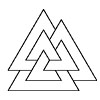 | Also known as: Hrungnir’s heart, heart of the slain, Heart of Vala, borromean trianglesThe emblem at left found on old Norse stone carvings and funerary stelés, is sometimes called “Hrungnir’s heart,” after the legendary giant of the Eddas. It is best known as the Valknut, or “knot of the slain,” and it has been found on stone carvings as a funerary motif, where it probably signified the afterlife. The emblem is often found in art depicting the God Odin, where it may represent the gods power over death. The valknut can be drawn unicursally (in one stroke), making it a popular talisman of protection against spirits.
Reference:http://symboldictionary.net/?s=end |
|
Symbol Code: SM000290 Symbol Name: Triceps (Category: Day of Judgement )
|
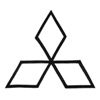 | Another, less common version of the Valknut, called a triceps, resembles a cut-away triangle, or a triangle formed of three diamonds (three ‘othala’ runes interwoven):The triceps was used into the middle ages as a magical sign of protection. The othala rune signifies the home and one’s ancestors.
Reference:http://symboldictionary.net/?s=end |
|
Symbol Code: SM000291 Symbol Name: Cornucopia (Category: Day of Judgement )
|
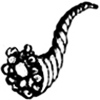 | The Cornucopia (Latin, ‘horn of plenty’), a spiraling, woven basket overflowing with an abundance of produce, is an ever-present symbol of harvest prosperity. The symbol dates back to an ancient tale of the Nymph Amalthea,* who, as a reward from the infant Zeus for a meal of Goat’s milk, was given an enchanted goat’s horn which gave whatever one wished for.The cornucopia became a ubiquitous symbol of fortune and plenty, and was associated with many Goddesses, including Fortuna, the goddess of good fortune, and Ceres, Goddess of agriculture.
Reference:http://symboldictionary.net/?s=end |
|
Symbol Code: SM000292 Symbol Name: Ogham (Elder/Ruis) (Category: Day of Judgement )
|
 | The Celtic Ogham alphabet dates from the fourth century. The alphabet is named for Ogmos, the Celtic god of knowledge and communication. Ogmos was associated with the Gaulish Ogmios and the Greek Hermes.The alphabet consists of twenty letters, each named for a different tree believed sacred to the Druids. Each letter is made up of one to five straight or angled lines incised on a straight base line. Because the number of letters, and the number of lines that make up each letter, some scholars have theorized that the ogham may have originated as a system of hand signs.
Reference:http://symboldictionary.net/?s=end |
|
Symbol Code: SM000293 Symbol Name: Keris (Category: Day of Judgement )
|
 | The Keris (Malaysian, dagger) originated in tenth-century Java and can be found throughout Southeast Asia, particularly Malaysia and Indonesia.The keris is a talismanic weapon- a sword or dagger with unique characteristics, carried by men and handed down from father to son, often through a great many generations. A new keris is made by a special artisan, known as an Empu.The keris is not only a protective amulet, but is considered a mark of manhood.
Reference:http://symboldictionary.net/?s=end |
|
Symbol Code: SM000294 Symbol Name: Unicorn (Category: Day of Judgement )
|
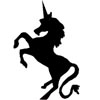 | The unicorn is one of the most ancient mythological beasts. Although in modern times it is most often depicted as an ethereal white horse, it has been variously described as an antelope, sheep, goat, or as a composite creature akin to a griffin or sphinx. Then, as later, the unicorn was a symbol of power and virility.
Reference:http://symboldictionary.net/?s=end |
|
Symbol Code: SM000295 Symbol Name: Unification Church (“Moonies”) (Category: Day of Judgement )
|
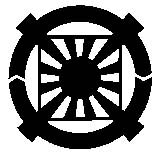 | he symbol of the Unification Church of Sun Myung Moon (commonly referred to by the derogatory term “Moonies”), a group often accused of cult-like tendencies. According to church literature, the different parts of the symbol have various meanings: “The center circle symbolizes God, truth, life, and light. Those four elements reach out or radiate from this origin to the whole cosmos in twelve directions. The number twelve indicates the twelve types of human character. Historically, the number twelve has been important in God’s dispensation; for example, Jesus had twelve disciples. The significance of the symbol, then, indicates that truth (the Principle) is able to spread out in twelve ways. According to Father, the structure of the heavenly kingdom is also patterned after this basic system; i.e., twelve tribes and twelve character types. The outer circle represents the harmony of giving and receiving action, the principle of the cosmos.”The central wheel in this emblem is related to the kuruma, or carriage wheel, a traditional Japanese heraldic symbol.
Reference:http://symboldictionary.net/?s=end |
|
Symbol Code: SM000296 Symbol Name: Raelians (Raelian Star) (Category: Day of Judgement )
|
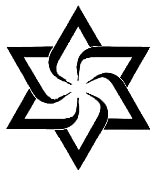 | This is the symbol of the Raelian “UFO cult,” representing a spinning galaxy within a hexagram.The original emblem, a hexagram containing a swastika, was deemed offensive and redesigned:The Raelians have no ties or connections to Nazism; the swastika was intended in its older meaning as an Eastern Cosmogram- a symbol of the whirlings of the universe.
Reference:http://symboldictionary.net/?s=end |
|
Symbol Code: SM000297 Symbol Name: Solomon’s Knot (Comacine Knot) (Category: Day of Judgement )
|
 | The image at right is the most common of several decorative devices referred to as “Solomon’s Knot,” a simple design of interlaced, endless loops.This particular design is very ancient, and appears all over the architecture of the ancient world, and further back, in stone-age carvings.The design is frequently used in the designs of ancient synagogues, which probably gave rise to the symbol’s association with King Solomon.
Reference:http://symboldictionary.net/?p=2475 |
|
Symbol Code: SM000298 Symbol Name: Star of Ishtar (Category: Day of Judgement )
|
 | A symbol of the Mesopotamian Goddess Ishtar (Anath, Astarte, Inanna). The eight points represent the movements of the planet Venus associated with this Goddess, and the eight gates of the city of Babylon.
Reference:http://symboldictionary.net/?p=2990 |
|
Symbol Code: SM000299 Symbol Name: Adar (Sacred Fire) (Category: Day of Judgement )
|
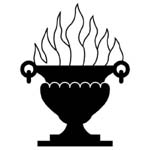 | The Adar is the sacred fire of the Zoroastrians (Parsis). The fire symbolizes purity, the essence of life, and the presence of God. In the Zoroastrian creation story, fire is the last creation, but brings life to all that came before it. It is a similar concept to the Ruach ha Elohim, (Holy Spirit) in the Hebrew scriptures. The sacred flame is presided over by Asha Vahista (“Holiest Truth,”) one of the Amesha Spentas or “bounteous immortals,” divine beings similar to Archangels.
Reference:http://symboldictionary.net/?p=1797 |
|
Symbol Code: SM000300 Symbol Name: Cretan/Minoan Snake Goddess (Category: Day of Judgement )
|
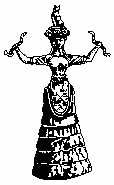 | An image of a Serpent-bearing Goddess figure found in the remains of a temple in Knossos, Crete.She is one of several such figurines unearthed.The name and purpose of the figure has never been deciphered, but she is associated with animals- mainly bees and snakes, and associated with the labyrinth and the labrys symbols.
Reference:http://symboldictionary.net/?p=3303 |
|
Symbol Code: SM000301 Symbol Name: Adinkra Symbols (Funeral Symbols) (Category: Day of Judgement )
|
 | Pagya (flint for fire making) Bravery, striking out.The name Adinkra comes from the legendary King conquered by the Ashante people,who, according to legend, wore luxurious patterned fabrics. Adinkra means “goodbye,” and the special cloth was reserved for funeral garments.
Reference:http://symboldictionary.net/?p=1787 |
|
Symbol Code: SM000302 Symbol Name: Sankofa (return and get it) (Category: Day of Judgement )
|
 | Mistakes can be rectified, look to the past for solutions. Sankofa is also depicted as a backwards-looking goose.
Reference:http://symboldictionary.net/?p=1787 |
|
Symbol Code: SM000303 Symbol Name: Osrane ne Nsoroma (Category: Day of Judgement )
|
 | The Osrane ne Nsoroma is the Adinkra symbol for wisdom/learning/humility. (all of which I got except for humility.
Reference:https://www.fictionpress.com/u/546107/Osrane-ne-Nsoroma |
|
Symbol Code: SM000391 Symbol Name: Process Sign (Unity Cross) (Category: Day of Judgement )
|
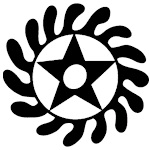 | The Process Sign is the emblem of the Process Church of the Final Judgement, a short-lived sect inspired by Scientology. The symbol, created for the now defunct Church, is meant to mimic the Hindu swastika and its cosmic whirlings. The shape suggests a letter “P” viewed from four directions, and represents the four “persons” of the Process God- Jehovah, Jesus, Satan, and Lucifer, as well as the four ‘archetypes’ believed to drive human behavior. These ‘persons’ are divided into two sets of polar opposites represented by the four armed cross.
Reference:http://symboldictionary.net/?s=judgement |
|
Symbol Code: SM000392 Symbol Name: Unity Cross (Category: Day of Judgement )
|
 | Process doctrine posited that humans and human nature were separate from an infinite, supreme God. When the universe was created, God became separated into the four personalities previously mentioned. The Church used a combination of Scientology techniques and ritual to reconcile archetypes within believers, with the ultimate intent of erasing the separate existences of the four persons. Another version of the “Unity Cross” was a variation on Ophite Gnostic imagery of a crucified serpent:The symbol of the serpent of the cross in the Process is an emblem of opposites reconciled (Christ and Satan) through love.
Reference:http://symboldictionary.net/?s=judgement |
|
Symbol Code: SM000393 Symbol Name: FOFO (Category: Day of Judgement )
|
 | "yellow flowered plant" symbol of jealousy and envy"When the fofo's petals drop, they turn into black spiky-like seeds. The Akan liken the nature of this plant to a jealous person."- The Adinkra Dictionary by W. Bruce WillisThere is a Akan proverb associated with this symbol: "What the fofo plant wishes is that the gyinantwi seeds turn black."
Reference:http://www.adinkra.org/htmls/adinkra/fofo.htm |
|
Symbol Code: SM000394 Symbol Name: AKOFENA (Category: Day of Judgement )
|
 | "sword of war " symbol of courage, valor, and heroismThe crossed swords were a popular motif in the heraldic shields of many former Akan states. In addition to recognizing courage and valor, the swords can represent legitimate state authority.
Reference:http://www.adinkra.org/htmls/adinkra/akofena.htm |
|